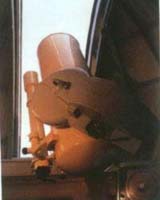In a sign of international cooperation, it seems as if Russia is helping the Korean democracy launch its first astronaut into space. Since South Korea lacks the technology to successfully put a man into space, they are hiring out the Russians to do it for them, all the while taking their first baby step towards the stars.
(Space Travel) Russia will sign a contract with South Korea December 7 to launch the East Asian country's first astronaut on board a Russian carrier rocket in 2008, the Federal Space Agency said Wednesday. The number of hopefuls to become South Korea's first ever astronaut has dropped from 36,000 to 30. The final candidate and one reserve will be selected soon. [...]
"The project has the South Korean president's special support, and will serve to strengthen relations between Russia and South Korea," Panarin said, adding the project was 100% financed by Seoul.
Although science fiction writers often portray space as dominated by western ideals, with South Korea's entry space may become more Asian in appearance. The Korean democracy probably does not want to get left behind as the major space powers grab their share of resources above, and probably wants to slice out a pie for themselves.
Putting their first astronaut into orbit should help fuel the space passion for that little penisula, and perhaps help ease the tension between the two Korea's (as they are virtually brothers).
Note: With both China and South Korea sending up humans in space, where is Japan in all of this?









![ColonyWorlds[at]Gmail[dot]com](http://img.photobucket.com/albums/v438/hiddennook/ColonyWorlds.png)






